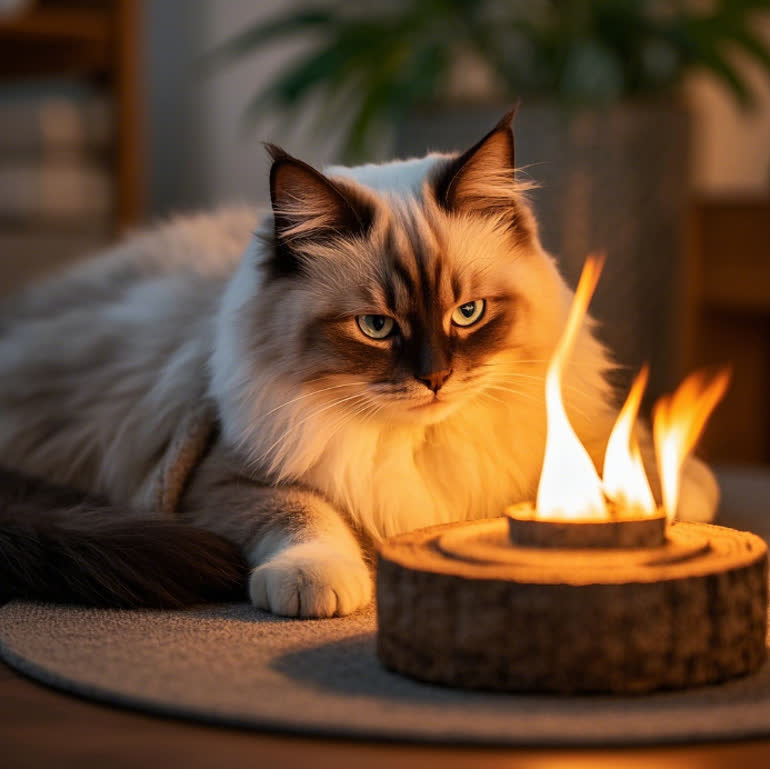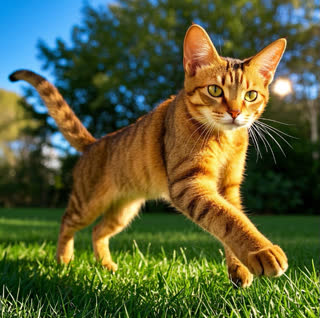Ragdoll cats breed, celebrated for their affectionate demeanor and luxurious semi-long fur, require specific environmental conditions to thrive, especially during winter. As the temperatures drop, maintaining the
ideal temperature for ragdoll cats in winter becomes crucial to prevent health issues like hypothermia and ensure their comfort. This comprehensive guide explores the science-backed temperature range, practical heating solutions, and expert-recommended care tips to help your ragdoll stay warm and vibrant throughout the colder months.
Ragdolls, despite their thick coats, are inherently sensitive to cold due to their low body fat and indoor-bred nature . Their fur, while plush, lacks the dense undercoat of breeds like Maine Coons, making them less insulated against extreme cold. Additionally, their docile personalities mean they’re less likely to seek warmth independently, relying on owners to create a cozy environment.
The ideal temperature for ragdoll cats in winter is between 68–75°F (20–24°C) . This range mimics their natural comfort zone and prevents stress-related behaviors. Temperatures below 59°F (15°C) can cause discomfort, while prolonged exposure to 45°F (7°C) or lower increases the risk of hypothermia . For kittens, seniors, or cats with health issues like arthritis, maintaining 70–75°F (21–24°C) is recommended .
Several factors affect how ragdolls tolerate cold:
Age and Health: Kittens and older cats have weaker thermoregulation. Senior cats with arthritis may prefer warmer spots to ease joint pain .
Activity Level: Indoor ragdolls with limited exercise may struggle to generate body heat. Encouraging play can boost their metabolism .
Coat Thickness: While ragdolls grow thicker winter coats, grooming is essential to prevent matting, which reduces insulation .
Heated Beds and Pads: Pet-safe heating pads (e.g., K&H Pet Products) or self-warming mats provide localized warmth. Place them in cozy corners away from drafts .
Space Heaters: Ceramic heaters with thermostat controls (e.g., Dreo Space Heater) maintain consistent room temperatures without drying the air .
Radiant Floor Heating: Ideal for cold floors, radiant heating systems evenly distribute warmth and are safe for curious cats .
Regular brushing helps maintain your ragdoll’s coat quality, ensuring it traps heat effectively. Avoid shaving their fur, as this removes natural insulation .
Monitor your cat for these indicators:
Shivering or Huddling: A common response to cold stress.
Cold Ears/Paws: Touch their extremities—if cold, move them to a warmer area .
Lethargy: Reduced activity may signal discomfort or illness .
Seeking Warm Spots: Cats may curl up near heaters or under blankets.
Overheating: Keep heaters at least 3 feet away from cats to prevent burns. Avoid electric blankets, which pose fire risks .
Neglecting Hydration: Cold weather can reduce water intake. Offer warm water or wet food to prevent urinary issues .
Outdoor Exposure: Ragdolls should never be left outdoors in freezing temperatures. Even short walks require protective clothing .
Hypothermia: Symptoms include shallow breathing and weakness. If suspected, wrap your cat in a warm blanket and seek veterinary care immediately .
Respiratory Infections: Dry indoor air can irritate airways. Use a humidifier to maintain 40–60% humidity .
Obesity: Winter inactivity may lead to weight gain. Adjust feeding portions and engage in daily play .
For owners in colder climates:
Extreme Cold: Use heated outdoor enclosures with bedding if your cat spends time outside .
Snow/Ice: Wipe paws after walks to remove de-icing chemicals, which are toxic if ingested
Maintaining the ideal temperature for ragdoll cats in winter is essential for their health and happiness. By combining proper heating, insulation, and vigilant monitoring, you can ensure your ragdoll stays cozy and vibrant. Remember to consult your veterinarian for personalized advice, especially if your cat has underlying health conditions. With these tips, your furry companion will thrive through even the coldest winter months.
Key Takeaways:
Temperature Range: 68–75°F (20–24°C) is optimal.
Heating Solutions: Use heated beds, space heaters, and radiant flooring.
Grooming: Brush regularly to maintain coat insulation.
Health Checks: Monitor for signs of hypothermia and respiratory issues.
Stay proactive, and your ragdoll will enjoy a warm, stress-free winter!










